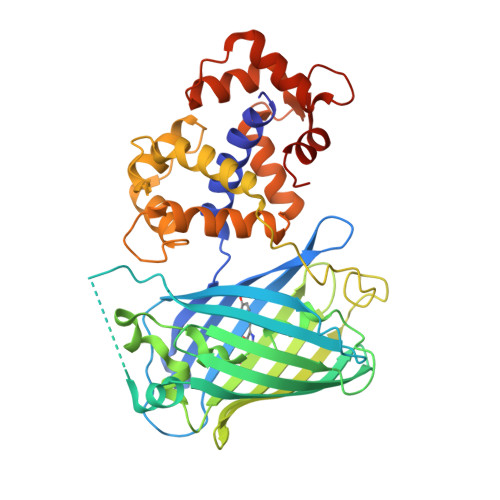Genetically encoded photo-switchable molecular sensors for optoacoustic and super-resolution imaging.
Mishra, K., Fuenzalida-Werner, J.P., Pennacchietti, F., Janowski, R., Chmyrov, A., Huang, Y., Zakian, C., Klemm, U., Testa, I., Niessing, D., Ntziachristos, V., Stiel, A.C.(2021) Nat Biotechnol
- PubMed: 34845372
- DOI: https://doi.org/10.1038/s41587-021-01100-5
- Primary Citation of Related Structures:
6TV7, 6YA9, 6ZSM, 6ZSN, 7AUG - PubMed Abstract:
Reversibly photo-switchable proteins are essential for many super-resolution fluorescence microscopic and optoacoustic imaging methods. However, they have yet to be used as sensors that measure the distribution of specific analytes at the nanoscale or in the tissues of live animals. Here we constructed the prototype of a photo-switchable Ca 2+ sensor based on GCaMP5G that can be switched with 405/488-nm light and describe its molecular mechanisms at the structural level, including the importance of the interaction of the core barrel structure of the fluorescent protein with the Ca 2+ receptor moiety. We demonstrate super-resolution imaging of Ca 2+ concentration in cultured cells and optoacoustic Ca 2+ imaging in implanted tumor cells in mice under controlled Ca 2+ conditions. Finally, we show the generalizability of the concept by constructing examples of photo-switching maltose and dopamine sensors based on periplasmatic binding protein and G-protein-coupled receptor-based sensors.
Organizational Affiliation:
Institute of Biological and Medical Imaging, Helmholtz Zentrum München, Neuherberg, Germany.





















